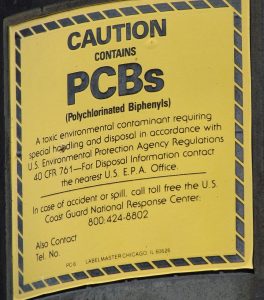24
Aug
Banned Chemicals Linked to Increased Autism Risk
(Beyond Pesticides, August 24, 2016) Researchers at Drexel University report that higher levels of some organochlorine compounds during pregnancy are associated with autism spectrum disorder (ASD) and intellectual disability (ID). The organochlorine compounds under study have long been banned in the U.S., and include pesticides like DDT, underscoring how pervasive and persistent these chemicals are, and their continued impact on human health.
The research is reported in the  study Polychlorinated Biphenyl and Organochlorine Pesticide Concentrations in Maternal Mid-Pregnancy Serum Sam
study Polychlorinated Biphenyl and Organochlorine Pesticide Concentrations in Maternal Mid-Pregnancy Serum Sam
ples: Association with Autism Spectrum Disorder and Intellectual Disability, which examines whether prenatal exposure to polychlorinated biphenyls (PCBs) and organochlorine pesticides (OCPs) influences offspring risk of ASD and intellectual disability without autism (ID). According to the research, children born after being exposed to the highest levels of organochlorines during their mother’s pregnancy are roughly 80 percent more likely to be diagnosed with autism when compared to individuals with the very lowest levels of these chemicals.
The team looked at a population sample of 1,144 children born in Southern California between 2000 and 2003. Data was accrued from mothers who had enrolled in California’s Expanded Alphafetoprotein Prenatal Screening Program, which is dedicated to detecting birth defects during pregnancy. Participants’ children were separated into three groups: 545 who were diagnosed with autism spectrum disorder, 181 with intellectual disabilities but no autism diagnosis, and 418 with a diagnosis of neither. Blood tests were used to determine the level of exposure to two different classes of organochlorine chemicals: Polychlorinated biphenyls (PCBs, which were used as lubricants, coolants and insulators in consumer and electrical products) and organochlorine pesticides (which include chemicals like DDT).
According to the researchers, human exposure to PCBs and organochlorines is ubiquitous. Biomonitoring data, like those collected by the Centers for Disease Control’s (CDC) National Health And Nutrition Examination Survey (NHANES) still detect measureable levels of these chemicals in the U.S. population. However, according to lead researcher Kristen Lyall, ScD, assistant professor in Drexel University’s A.J. Drexel Autism Institute, adverse effects are related to levels of exposure, not just presence or absence of detectable levels. “In our Southern California study population, we found evidence for modestly increased risk for individuals in the highest 25th percentile of exposure to some of these chemicals.”
The study finds that two compounds in particular ”” PCB 138/158 and PCB 153 ”” stood out as being significantly linked with autism risk. Children with the highest in utero levels (exposure during their mother’s pregnancy) of these two forms of PCBs were between 79 and 82 percent more likely to have an autism diagnosis. In children with intellectual disabilities but not autism, the highest exposure to PCBs appeared to double the risk of a diagnosis when compared to those with the lowest exposure.
“There’s a fair amount of research examining exposure to these chemicals during pregnancy in association with other outcomes, like birth weight — but little research on autism, specifically,” Dr. Lyall said. “To examine the role of environmental exposures in risk of autism, it is important that samples are collected during time frames with evidence for susceptibility for autism — termed ‘critical windows’ in neurodevelopment. Fetal development is one of those critical windows.”
PCBs and organochlorines are categorized as persistent organic pollutants (POPs) because they persist for long periods of time in the environment, eventually making their way up food chains, accumulating in the fatty tissues and animals and humans. Their legacy of poisoning the environment has been well documented, despite being banned for decades. Recent studies have linked these POPs to hormonal disturbances, abnormal sperm development, cancer, diabetes, obesity and environmental contamination.
Beyond Pesticides tracks the scientific literature related to pesticide exposure through the Pesticide Induced Diseases Database (PIDD). One way to reduce human and environmental contamination from pesticides is buying, growing, and supporting organic. Consumer choices encourage the protection of the people who help put food on our table every day by purchasing organic. By buying organic, you support an agricultural system that does not permit the application of dangerous pesticides. For more information on how organic is the right choice for both consumers and the farmworkers that grow our food, see Beyond Pesticides webpage, Health Benefits of Organic Agriculture.
All unattributed positions and opinions in this piece are those of Beyond Pesticides.
Source: Drexel Now










